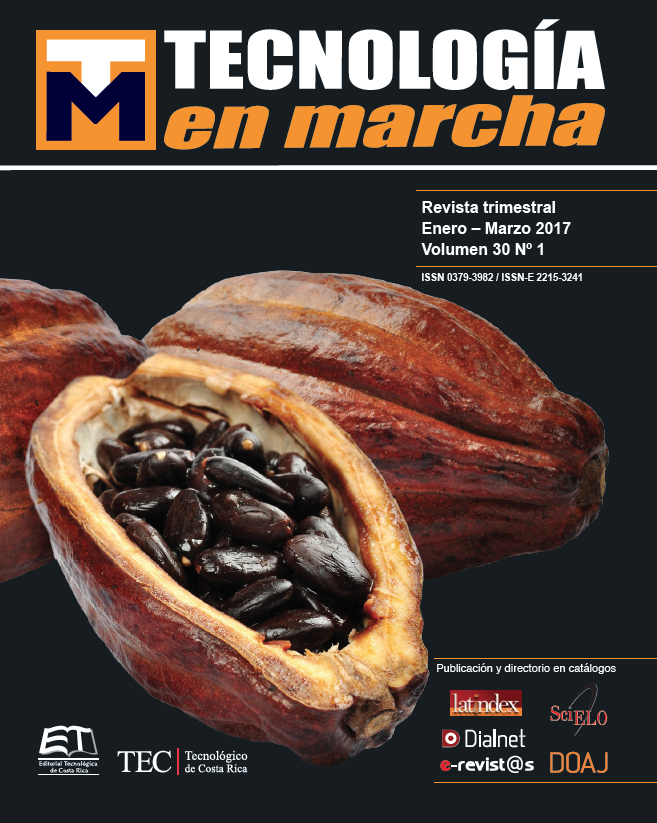In vitro assessment of ten strains of nematophagous fungi to control Meloidogyne exigua, Meloidogyne incognita and Radopholus similis
Main Article Content
Abstract
The search of alternative strategies to the use of nematicides to control plant parasitic nematodes is a major issue today. On this matter there has been a growing interest in the effectiveness of biological control using nematophagous fungi. Therefore, the objective of this research was to determine the predatory capacity of several fungal strains were isolated from soil from plantations located in the Región Huetar Norte. To reach this goal, laboratory experiments were established to evaluate the in vitro mortality of individuals of Radopholus similis, Meloidogyne incognita and M. exigua, in the presence of each one of these fungal strains. According to the criteria, Hypocrea virens and Penicillium janthinellum strains had no predatory activity against the nematode species tested. Monacrosporium megalosporum, Trichoderma spirale and T. asperellum 2 strains showed nematicide activity against R. similis and M. exigua. Meanwhile, Gliocadium roseum and Fusarium oxysporum showed predatory activity against R. similis, only. Furthermore, T. asperellum and Gongronella butleri, showed potential for controlling M. exigua. None of the strains had the capability to control M. incognita. Moreover, P. lilacinus and F. oxysporum showed the capability to parasitize the eggs of both Meloidogyne species tested. In the same way, the eggs of M. incognita were parasitized by T. asperellum and T. spirale, and 56% of the eggs of M. exigua were parasitized by M. megalosporum. These results should be confirmed by field tests. It is also important, to study the secondary metabolites produced by these fungi, evaluate the possibility of genetic improvement and study the mechanisms involved in their nematode predatory capacity.
Article Details
Los autores conservan los derechos de autor y ceden a la revista el derecho de la primera publicación y pueda editarlo, reproducirlo, distribuirlo, exhibirlo y comunicarlo en el país y en el extranjero mediante medios impresos y electrónicos. Asimismo, asumen el compromiso sobre cualquier litigio o reclamación relacionada con derechos de propiedad intelectual, exonerando de responsabilidad a la Editorial Tecnológica de Costa Rica. Además, se establece que los autores pueden realizar otros acuerdos contractuales independientes y adicionales para la distribución no exclusiva de la versión del artículo publicado en esta revista (p. ej., incluirlo en un repositorio institucional o publicarlo en un libro) siempre que indiquen claramente que el trabajo se publicó por primera vez en esta revista.

